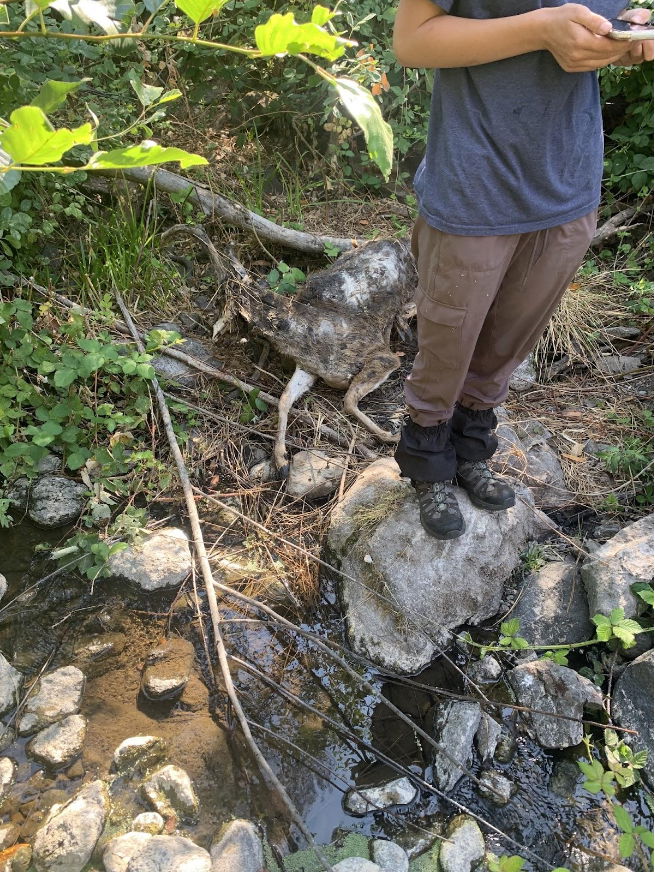Samih's summer research adventures
This summer, I had the exciting opportunity to shadow research student Jake Harvey (Institute for Wildlife Studies) working with True Wild on the North Bay’s Living with Lions Project, a collaboration with Audubon Canyon Ranch. I got a front-line view of how wildlife conservation research is conducted on and off the field for apex predators such as the mountain lion in our region in Sonoma/Napa and its surroundings.
As part of the research work underway, we had to look for mountain lion kills in order to find trends in mountain lion feeding behavior in the Sonoma / Napa region by checking the types of prey these lions are targeting. Prior to making trips in the field, a lot of sophisticated data goes into locating the kill sites (called clusters); we used collared mountain lions’ GPS locations to figure out their movement in the region.
These data are run through a computer algorithm to map the location on landowner site maps to understand which properties or lands these clusters are located. Then follows the painstaking task of calling every property owner by looking for their details online and in phone books, in order to get permission to access their properties, often in wild or remote areas, to investigate and collect samples.
I was fortunate to visit close to 10 such clusters or sites this summer. Once we got to the area, we typically had to hike along deer trails which meant that there could be steep and slippery slopes, heavily bushed areas, tall grass as well as rattlesnakes, poison oak, and much more. After some tough, strenuous hikes, we would reach the location calculated by the algorithm, then search the area for kills, sometimes cached, meaning that the kill was hidden intentionally by the lion.

We were able to locate kills ranging from deer to wild pigs and even an otter. Deer kills are the most common. The jawbone is collected for testing and sampling to determine the age of the deer, and the bone marrow is checked to determine the health of the deer which in turn may provide insight into the health of the apex predator concerned. While exhilarating and potentially dangerous, the hikes through all sorts of foliage and terrain were always beautiful and it always felt like a great achievement to find the bones left behind from each kill (as in the photo above).
No amount of reading textbooks and watching videos could have prepared me for the amount of learning I had from my experiences this summer being part of a hands-on research project in the field with True Wild.
If we have to solve the current environment and wildlife conservation challenges, we have to get more students out in the field, like me, to experience and understand our local issues. I want to continue advocating for school education that involves getting students involved in local organizations like True Wild and experiencing the environment and nature the way I did, scaling mountains into uncharted territory, and tracking mountain lion activity.
I have learned that we live in a highly symbiotic world where humans, the environment, and wildlife including apex predators such as mountain lions all have a place. We have to respect this balance and protect it as it means the survival of all species on our beautiful planet.
As I head back to school, I look forward to continuing to engage in learning and problem-solving with the mountain lion team throughout the year! For more information on the work of the organizations involved visit their websites:
www.egret.org/living-with-lions


